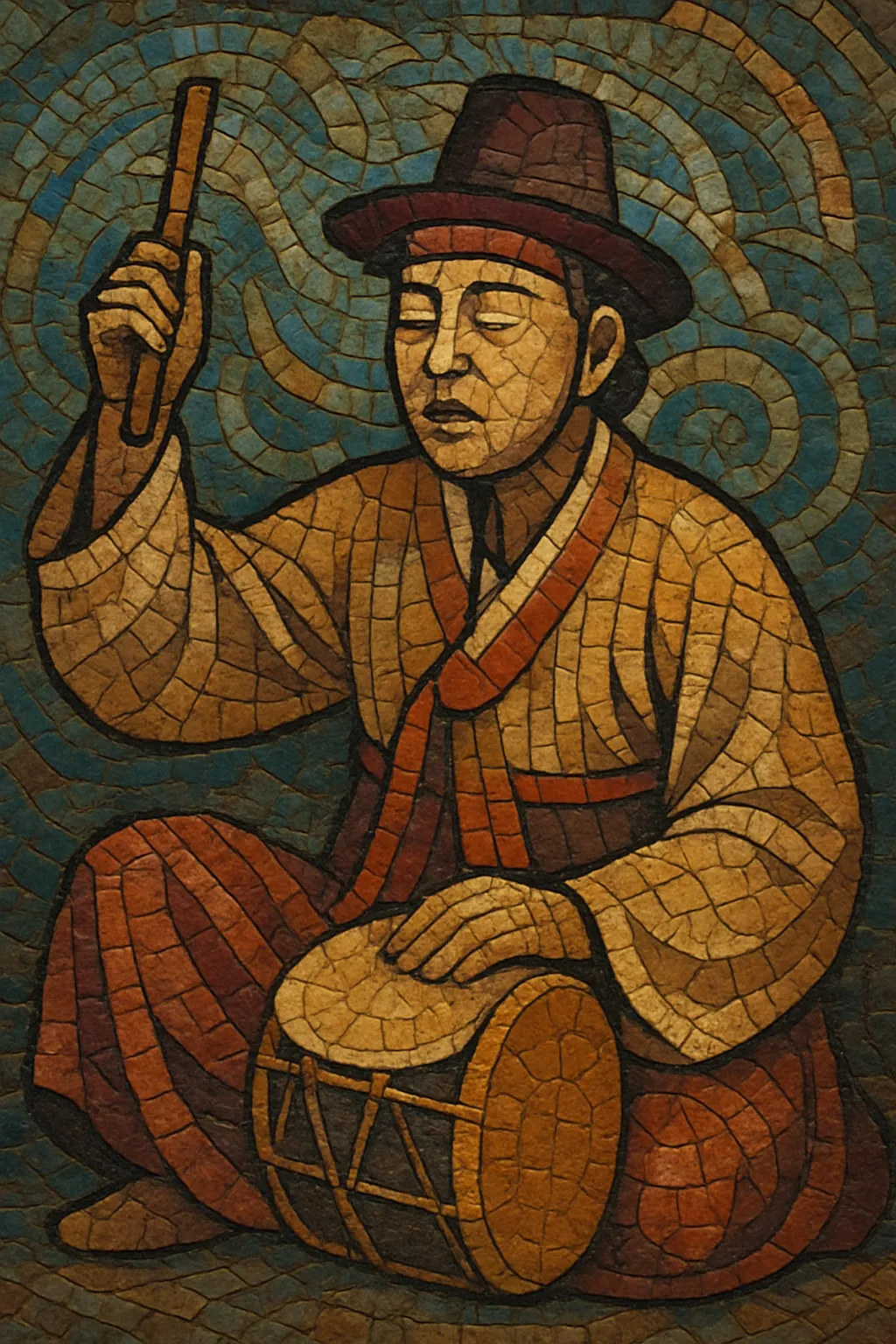Beompae is the liturgical chant tradition of Korean Buddhism, used to intone sutras, dhāraṇīs, and ritual verses during temple ceremonies. It features melismatic, highly ornamented vocal lines delivered in free rhythm, prioritizing breath, diction, and solemn projection over metered pulse.
Texts are sung in Sino-Korean (hanmun) as well as in Korean, and the chant is framed by the sounding of the four Buddhist temple instruments: the beomjong (large bronze bell), beopgo (dharma drum), mogeo (wooden fish), and unpan (cloud-shaped metal plate). The melodic contour favors stepwise motion, stable pitch centers, and ornamental inflections (sigimsae) characteristic of Korean traditional music, aiming to sanctify space and focus communal meditation.
Functionally, beompae is prayer through sound: it ritualizes scripture, guides processional movement, and marks thresholds in ceremonies such as Yeongsanjae, one of Korea’s most important Buddhist rites.
Beompae (梵唄) developed as the Korean reception of Buddhist fanbai chant transmitted from China, arriving during the Three Kingdoms period and taking root in Unified Silla (668–935). Monastics adapted the imported liturgical style to Korean phonology and aesthetics, laying the foundation for a distinct chant lineage.
With Buddhism as a state religion, Goryeo courts and monasteries sponsored ritual culture. Beompae practice diversified into Sino-Korean chant for canonical texts and vernacular hymnody (often called hwacheong) for lay participation. Chant masters codified repertoire, ceremonial order, and the use of the four dharma instruments to articulate the ritual cycle.
Although the Confucian Joseon state curtailed Buddhist institutions, monasteries preserved beompae in rural and mountain temples. The repertoire narrowed to core rites, but transmission continued through master–disciple lineages, ensuring the survival of vocal technique, ornamentation, and ritual know-how.
Following periods of upheaval in the late 19th and early 20th centuries, Buddhist communities revitalized chant practice. The Yeongsanjae ritual—within which beompae is central—was designated an Important Intangible Cultural Property in Korea and later inscribed by UNESCO on the Representative List of the Intangible Cultural Heritage of Humanity. Today, beompae is taught in seminaries and preservation societies, recorded by temple ensembles, and performed both in liturgy and on concert stages to sustain its living transmission.


